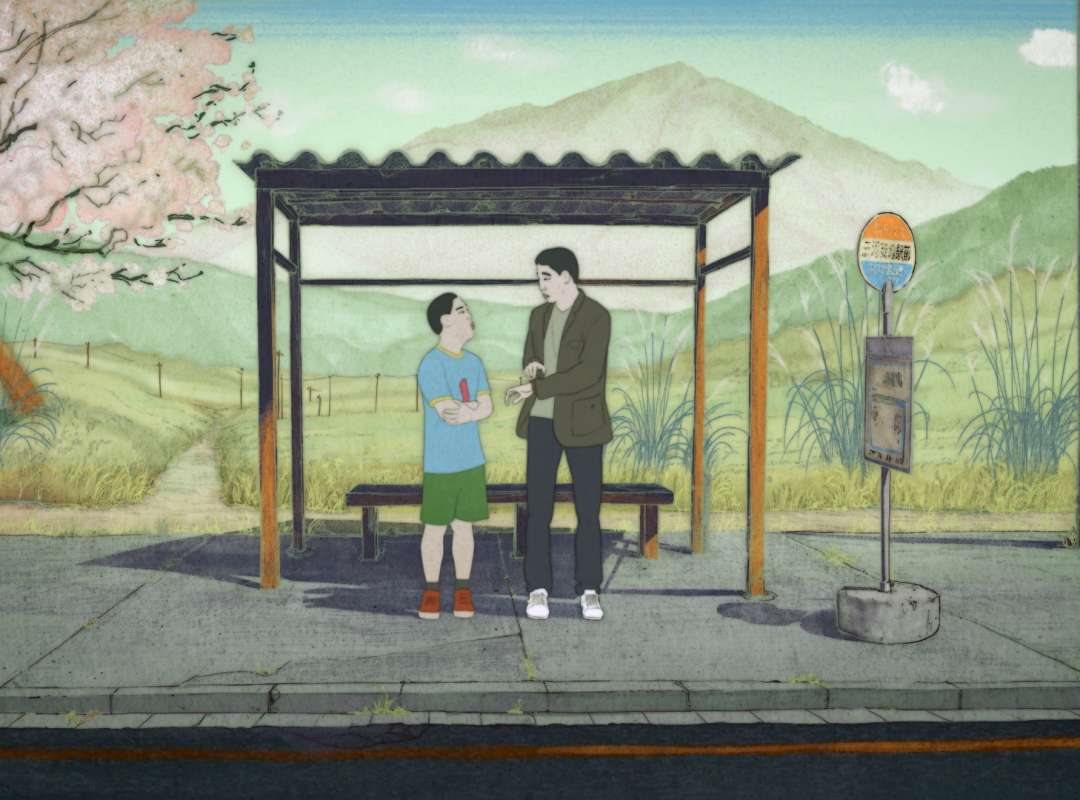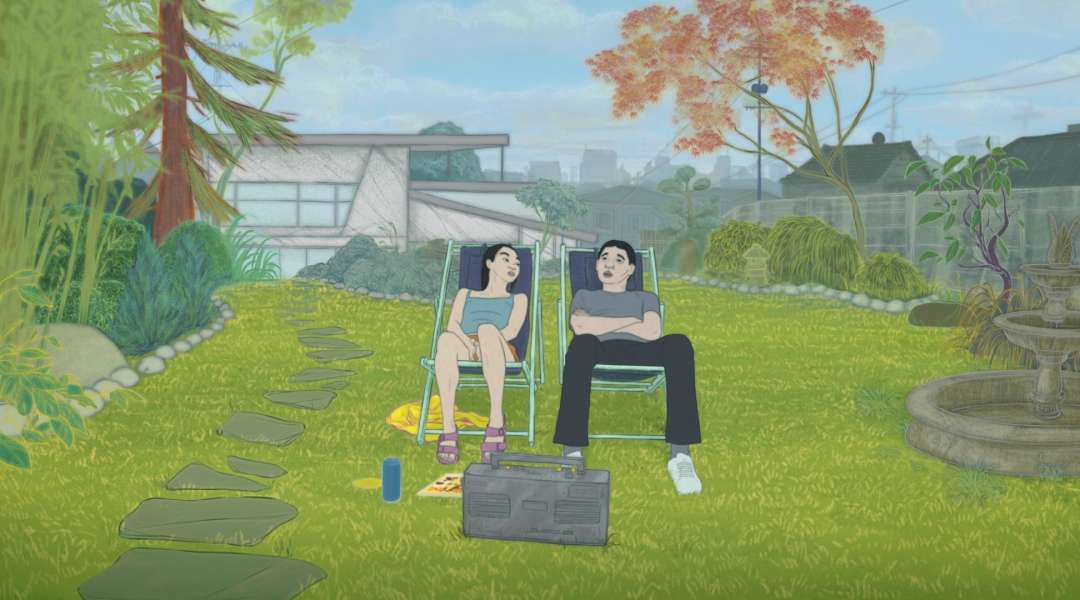 'Blind Willow, Sleeping Woman' uses a unique style of 'live animation'
'Blind Willow, Sleeping Woman' uses a unique style of 'live animation'
Japanese author Murakami Haruki has had an incredible impact on literature internationally, with Waseda University in Tokyo even recently opening up a dedicated exhibition space and replica of his writing studio, accessible for free to visitors. Now, celebrated painter, film composer and long-time Japan fan Pierre Földes is releasing 'Blind Willow, Sleeping Woman', an impressively unique animated exploration of some of Murakami's work, using his own style of 'live animation' in a film featuring everything from winter trips to Hokkaido to giant talking frogs. We spoke to him to learn more about his work, inspiration and connection to Japan.
Hi Pierre, thanks so much for joining us today. To kick things off, please tell us a little about yourself.
OK, well, I was born in the US from Hungarian and British parents and brought up in Paris. Initially I always saw myself becoming a painter. But somehow I studied piano, composition and orchestration. I went back to New York to start working on films as a composer. That’s when a friend of mine offered me a book by Murakami; she thought I’d like it. She was right! At some point I moved to Budapest where I went back to study art and got into filmmaking. Eventually I moved back to Paris and felt inspired to make a feature length animation based on short stories by Haruki Murakami.
What is your personal relationship to Japan?
Like many others, I’ve had a special attraction to Japanese culture. Very young, I remember reading Kawabata, Mishima, watching films by master filmmakers, Kurosawa, Ozu, Mizogushi, Naruse, Imamura.. But maybe most importantly, I was a great admirer of Japanese line drawings, amongst which the erotic style was also quite fascinating.
 A giant talking frog appears to warn a lonely Katagiri of Tokyo's impending doom
A giant talking frog appears to warn a lonely Katagiri of Tokyo's impending doom
Your film 'Blind Willow, Sleeping Woman' is an incredible accomplishment. If you had to explain the film in one sentence, how would you describe it?
It’s a film about how people too often spend their lives not quite living up to their expectations and then, suddenly, after something happens, realizing they need to wake up.
It’s an exploration of the magic world that lives within ordinary people. An adventure that dives into a few characters’ perception, exploring how they got lost by not being true to themselves, and suddenly waking up when something unexpected happens, an earthquake that shakes them up from within.
The film blends and interweaves various works by the Japanese author Haruki Murakami. What is your relationship to Murakami, and what drew you to his work?
I’m just an ordinary reader of Murakami, but somehow his work resonates with what I do. I like to explore what’s under the skin, deep inside before our thoughts actually make sense, into our magic worlds we all have more or less hidden, which reveal our hopes, our sadness, our frustrations. My characters, and his, suffer from a kind of urban loneliness; rather than depicting the dull realism of it, I think we both like to see the magical beauty that lies within very ordinary people.
 Komura has a curious encounter when searching for his lost cat
Komura has a curious encounter when searching for his lost cat
How was the process of making the film? How long did it take and what was involved?
The process was fascinating. I love every stage of filmmaking. Writing, storyboarding, casting, directing the actors, editing, making the animation, compositing, writing the music and mixing. I love it all. Especially when all the work is based on something you feel for passionately. Just the financing aspect was unexpectedly long, but that’s what it takes to make a film like this one. Production took around two and a half years. Development took quite a few more due mainly to the financing aspect.
The film has a very distinctive animation style. How is the style achieved and how did you arrive at it?
For the film, I created a specific style of animation I like to call “live animation” It involves making a storyboard, shooting with actors based on the storyboard, sculpting 3D heads to serve as tools to facilitate the work of the 2D animators, then start creating poses from the live action footage, then imitating the expressions from the actors and re-creating them for the characters the animators are working on. Finally, doing the in betweens just as in any 2D classic animation process. This style of animation is not rotoscoping and its not either motion capture. It’s something more evolved that contributes to creating detailed tailored expressions while being focused on the beauty of the line and the depth and power of each drawing.
 Kyoko slips into total silence in the aftermath of the 2011 Earthquake and Tsunami
Kyoko slips into total silence in the aftermath of the 2011 Earthquake and Tsunami
The film, like many of the novels, takes place just after the 2011 East Japan Earthquake and Tsunami. What is the significance of this?
One of the books I adapt, “after the quake” takes place after the 1995 Kobe earthquake. After I’d written my first drafts of the script, I felt the desire to place all stories within a common chronology and a few characters were “merged”. This happened after it appeared to me that some of the characters could be interpreted as being different facets of the same characters. They’re all at a point in their lives where they’re not quite what they could have been had they listened to their inner voices. The 2011 earthquake and tsunami was a traumatic event not only for the Japanese population but also for everyone. We all watched those images again and again, just as we watched the twin towers go to rubble in 2001. These outer tragedies reflect on us sometimes internally, creating an internal earthquake that helps reveal things that would have otherwise remained buried.
 The beautiful islands of the Seto Inland Sea, neighbouring the art island of Naoshima
The beautiful islands of the Seto Inland Sea, neighbouring the art island of Naoshima
During the making of the film, you were able to visit Japan for research. What struck you most about your travels and do you have any recommendations?
I loved Japan before I visited it. I loved it a little more after I did. I went there during the last stage of writing the final draft of the script. I had still quite a few questions for which i needed inspiration to find the answers; I remember I’d bought a pass to take the train everyday for a couple of weeks or so. So every afternoon I’d visit a town and its area, get lost, sleep there and in the morning I’d buy a bento box and take a bullet train to write my script. At the end of my trip i’d found all answers to my questions, i’d been fully inspired, my script was finished!
I also visited an amazing little island named Naoshima, I believe it’s traditionally populated by fishermen, later some chemical factory more or less destroyed it. But now it’s become this incredible contemporary art sanctuary. Highly recommended.
Do you know if Murakami has seen the film, and what was his reaction?
I’m not at liberty to talk for him, but the fact his name is still on the poster says he agreed to remain attached to the film.
 The 'House of Light' immersive exhibition by James Turrell, featured in Niigata's Echigo Tsumari Art Field festival
The 'House of Light' immersive exhibition by James Turrell, featured in Niigata's Echigo Tsumari Art Field festival
Do you have any plans to return to Japan? Alternatively, is there anywhere in particular you would like to visit on a second trip?
I’d love to go, Japan is fascinating, and they have wonderful hot baths too! Actually I was supposed to go to a festival where I was invited in Niigata, but the release of the film in France has made that trip impossible. But I’ll be going soon, hopefully to make the Japanese version of the film. I’m really looking forward to working with Japanese actors.
Are there any other projects you are working on that you would like to let our readers know about?
I have a few. The first one is not in animation, it’s an adaptation from a book by Nobel prize winner Naguib Mahfouz. It’s an amazing quest into one main character’s difficulty in dealing with reality.
Another project is an animation feature for children, but not only. It involves cats, witches, cell phone addicted creatures and a reversed world in which the cats need to find a lost magician to save them all.
For these projects and others I’m open to offers of collaboration!
Thank you so much for your time, Pierre!
'Blind Willow, Sleeping Woman' by Pierre Földes, is released in UK & Irish cinemas by Modern Films from 31 March.
Adapted from the short stories of Haruki Murakami, published by Vintage


























































